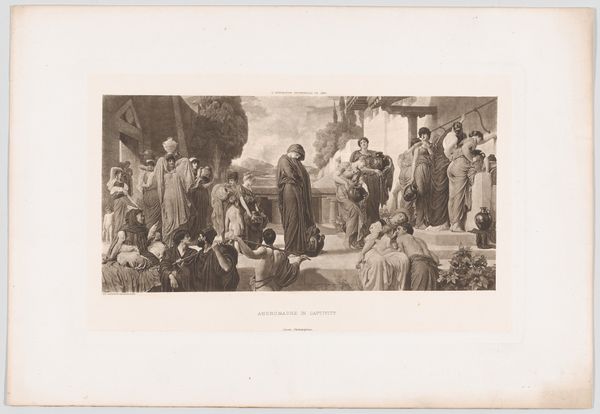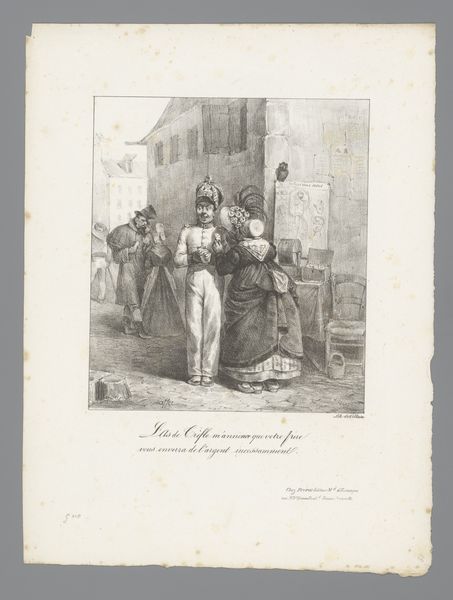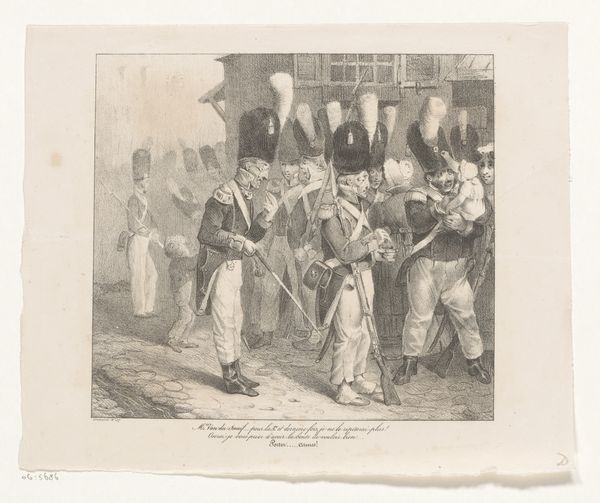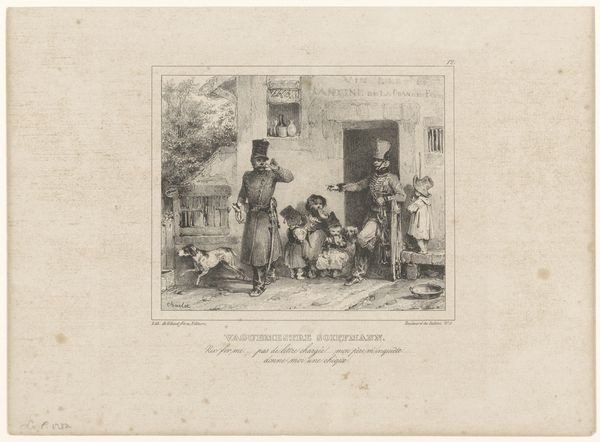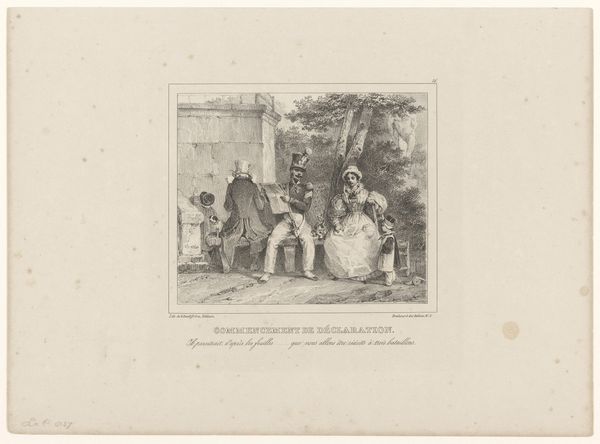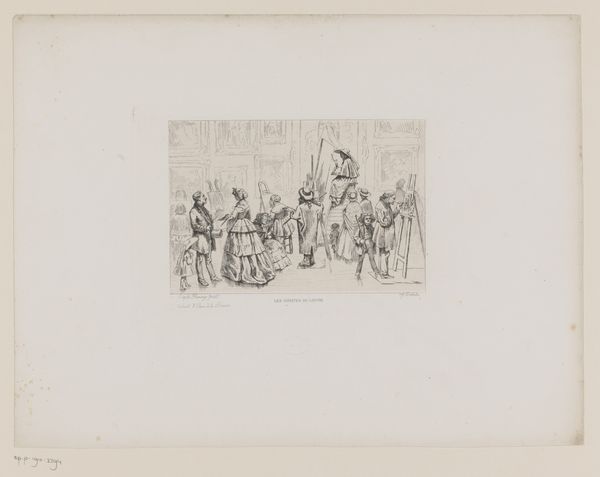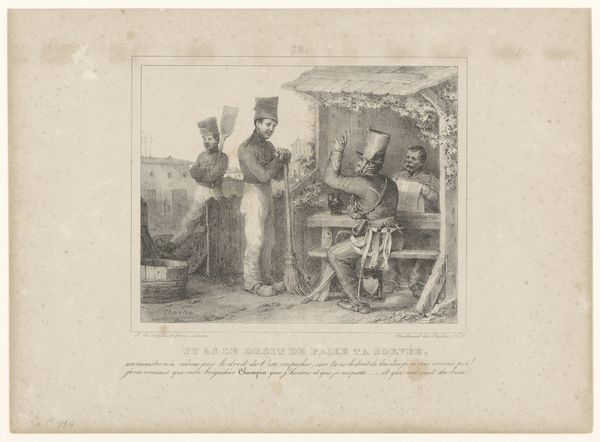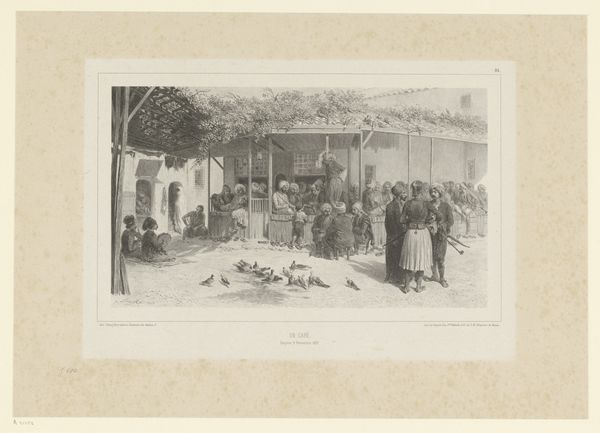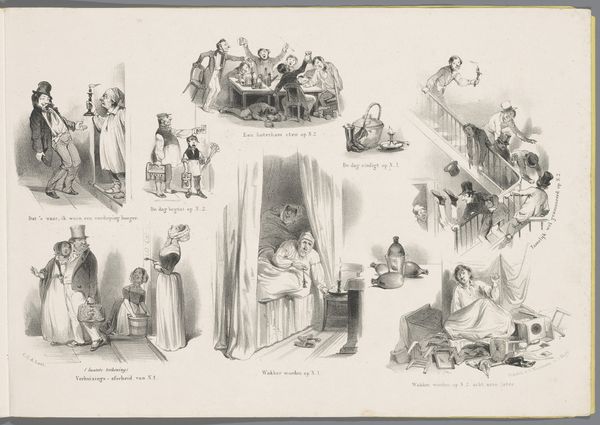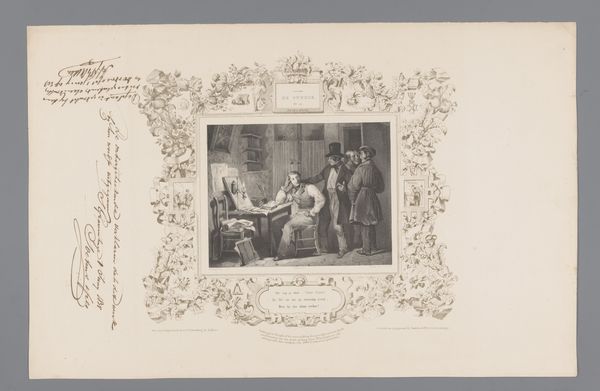
drawing, ink, pen
#
portrait
#
drawing
#
dutch-golden-age
#
ink
#
pen
#
genre-painting
#
modernism
Dimensions: height 307 mm, width 462 mm
Copyright: Rijks Museum: Open Domain
Editor: So, this ink drawing, "Bij de Opening der Staten Generaal," possibly from between 1900 and 1917 by Hendrik Jan Carel Linse... It strikes me as quite bleak. What cultural memory does this evoke for you? Curator: It's a layered image, isn't it? Linse presents the State Opening not as pomp and circumstance, but from the perspective of those on the margins. Note the repetition of downcast eyes, figures huddled together as if for warmth. What emotions do those symbols spark in you? Editor: A feeling of alienation, perhaps, or exclusion. But then, the soldier figure at the top feels so disconnected from the scenes below. Almost like he's unaware or unconcerned. Curator: Precisely! Linse uses that visual separation to create a commentary. The soldier represents the state, seemingly blind to the plight of the people below. The pen and ink itself suggests a quick, almost journalistic, rendering. Do you feel that contributes? Editor: Definitely. It gives a sense of immediacy, of capturing a real moment. Like these figures are always here, waiting, while the pageantry happens *above* them. Curator: Indeed. It uses the symbolic weight of those huddled masses against the isolated portrait of the General. What do you think this tells us about cultural memory? Editor: It seems to be a stark reminder of inequality, maybe a challenge to the dominant narrative of the time. Thank you; I wouldn’t have noticed those social structures at play on my own! Curator: My pleasure. Seeing the world through visual symbols allows a unique reading of collective cultural beliefs that are rarely explicit.
Comments
No comments
Be the first to comment and join the conversation on the ultimate creative platform.

